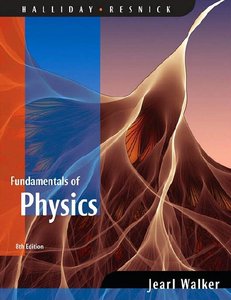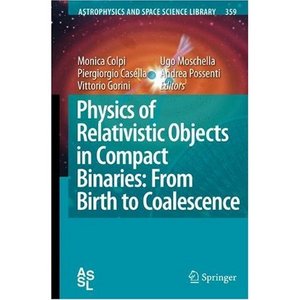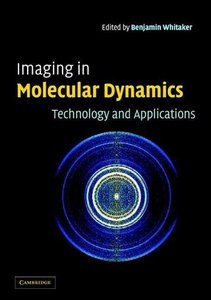Aca les traigo algo suuper exelente. Son una serie de lecturas por profesores universitarios acerca de einstein, sus estudios, vida y muuchas más cosas. Si tienen paciencia bájenlo es muuy bueno, luego les posteo otras cosas interesantes como esta.
TTC VIDEO - Albert Einstein: Physicist, Philosopher, Humanitarian (2009)
eLearning - DVDRip | AVI | 640x480 29.00fps | English | Run time: ~24 x 30 min | MP3 ~128.00 kbps | 5.14 GB
Lecture, Science, Biography, History
Albert Einstein: Physicist, Philosopher, Humanitarian, 24 half-hour lectures by award-winning Professor Don Howard of the University of Notre Dame, presents a wide-ranging intellectual biography of this iconic scientist, genius, and champion of social justice.
Albert Einstein is a riveting, all-encompassing look at the iconic man who forever altered the way we think about the world. By the conclusion of the course, you'll have become better acquainted with the whole Einstein—his scientific ideas, his personal philosophies, his thought processes, and his impact on both his own time and ours.
In May 1905, an unknown 26-year-old Swiss patent clerk wrote to a friend about four scientific papers he had been working on in his spare time. He casually alluded to one as "revolutionary," and he confidently asserted that another would modify the "theory of space and time." He had not yet started on a fifth paper that would also come out in 1905 and that would propose a surprising and earth-shaking equation, E=mc2.
This industrious young office worker was Albert Einstein, and with these papers he irrevocably changed the face of physics. Eventually, he would achieve fame and influence not only as a scientist but also as a philosopher and a humanitarian, involved with some of the most profound issues of the day. So identified has Einstein become with the changes wrought in science and culture in our era that Time magazine named him the "person of the century" in its December 31, 1999, issue.
Think Like Einstein
More than just a biography of Einstein's life, Albert Einstein provides you with an inside look at how this brilliant thinker arrived at his various revolutionary breakthroughs.
One of the secrets of Einstein's success was that he was well read in philosophy, and that guided his approach not only to framing and solving problems in physics but also to interpreting his discoveries in a more universal context. In addition, his philosophical background gave him the independence of judgment necessary to invent a new physics.
This is the intellectually exciting strategy you follow in Albert Einstein. Guided by Professor Howard, you reason your way to historic insights such as these:
* Light has both wave- and particle-like properties.
* Absolute space and absolute time are meaningless concepts.
* Gravity is caused by the curvature of space-time.
Each of these ideas sparked a scientific revolution. The first led to quantum physics, which is the comprehensive picture of the world below the atomic scale. The second and third are conclusions from the special and general theories of relativity, which this course explains in nontechnical detail.
In the Laboratory of the Mind
A creative thinker from an early age, Einstein had a knack for finding the perfect picture or thought experiment to express even the most arcane scientific ideas—a quality that makes him unusually accessible to the nonscientist. Einstein later said he always thought about a physics problem first in terms of images. He only later translated those pictures into a mathematical formalism.
Here are some of his well-known thought experiments that you investigate in Albert Einstein:
* Chasing a light beam: As a teenager, Einstein asked himself what would happen if he moved at the speed of light alongside a beam of light. This conceptual exercise held the germ for the special theory of relativity.
* Einstein's elevator: Einstein recognized that an observer ascending with constant acceleration, as in an ascending elevator, would not be able to distinguish his situation from one in which he was experiencing the effects of gravity, leading to the "equivalence principle" that underlies his general theory of relativity.
* EPR paradox: Einstein and two collaborators, Boris Podolsky and Nathan Rosen, devised a thought experiment that sought to prove quantum mechanics as an incomplete theory and not the final word in fundamental physics.
Albert Einstein features more than 50 animations—many in 3-D—designed specifically for these lectures. The result is a visually rich learning experience that makes Einstein's detailed scientific ideas easy to understand.
The Many Sides of Einstein
Einstein's dynamic life reflects a range of interests and passions that extend beyond the realm of modern physics and into fields like religion, international relations, and social justice. Indeed, Einstein frequently engaged with many of the leading social and political issues of his day. "As Einstein's growing physics reputation drew him onto a larger public stage," notes Professor Howard, "his social and political involvements expanded as well."
The many sides of the man covered in Albert Einstein give you a wealth of insights into his life:
* Far from being a head-in-the-clouds theoretician, Einstein was an enthusiastic inventor who pioneered a novel airplane wing, a refrigerator without moving parts, and a self-adjusting camera, among other devices.
* Einstein, a German Jew who fled an increasingly anti-Semitic Germany in 1932, supported the development of a safe haven for displaced Jews in Palestine and of Jewish institutions like Hebrew University. Fearing a large-scale conflict with Palestinian Arabs, however, he did not support a Jewish national state.
* Theoretical physics in the early 20th century was an emerging field. Einstein's work at the boundaries of science forced him to grapple with the various philosophical issues his work raised. Einstein's philosophies on scientific issues—such as the difference between direct and indirect evidence, the relationship between theory and experience, and the power of mathematical simplicity—were among the most influential of 20th-century science.
Professor Howard closes the course by examining the nature of Einstein's quintessential genius. In a century populated with brilliant scientists, profound philosophers, and selfless humanitarians, how did he come to embody all these qualities and also mean so much more? The rise of the dreamy-looking young man in the patent office in 1905 to the person of the century is worth studying in full.
Einstein: The Whole Man
Professor Howard is uniquely qualified to explore Einstein the whole man, putting Einstein's scientific discoveries into the context of his personal life, his philosophical views, and his outlook on the world. Educated in Physics as an undergraduate, Professor Howard went on to earn a Doctorate in the Philosophy of Science, and he has since devoted his research career to Einstein and his period. Professor Howard has been an assistant editor and a contributing editor for the Collected Papers of Albert Einstein, an ongoing series of volumes prepared by the Einstein Papers Project that is shedding new light on all aspects of Einstein's life.
Albert Einstein is a riveting, all-encompassing look at the iconic man who forever altered the way we think about the world. By the conclusion of the course, you'll have become better acquainted with the whole Einstein—his scientific ideas, his personal philosophies, his thought processes, and his impact on both his own time and ours.
professor : Don Howard
production land: usa
Run time: ~24 x 30 min
1. The Precocious Young Einstein
2. The Development of the Young Physicist
3. The Birth of the Quantum Hypothesis
4. Background to Special Relativity
5. Essentials of Special Relativity
6. From Bern to Berlin
7. Background to General Relativity
8. Essentials of General Relativity
9. From Berlin to Princeton
10. Philosophical Challenge of the New Physics
11. Einstein's Philosophy of Science
12. Zionism, Pacifism, and Internationalism
13. Einstein the Inventor and Musician
14. On the Road to the New Quantum Mechanics
15. Quantum Mechanics and Controversy
16. Einstein in Princeton—The Lonely Quest
17. Is Quantum Mechanics Complete?
18. The Expanding Universe
19. Einstein and the Bomb—Science Politicized
20. From the Manhattan Project to the Cold War
21. A Lifelong Commitment to Social Justice
22. Cosmic Religion and Jewish Identity
23. Einstein and Modernity
24. The Sage of Princeton—Einstein the Icon















+Cover.jpeg)
+Cover.jpeg)







